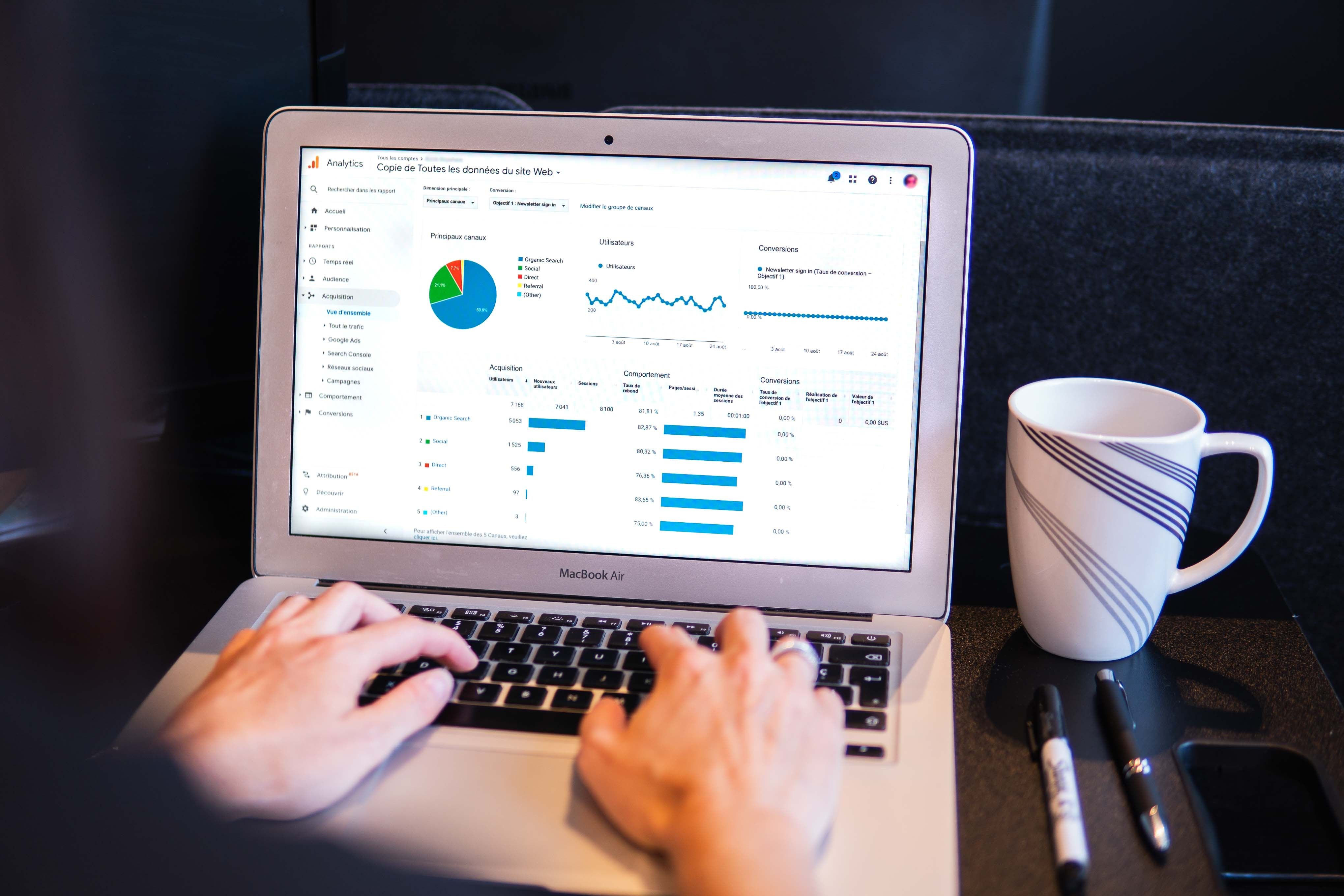Retail Analytics: Understanding and Analyzing Customer Behavior

Customer analysis has frequently been limited, in bricks-and-mortar retail, to evaluating customer loyalty cards and receipt data, or counting visitors crossing the threshold. Comprehensive customer analyses as carried out in online retail are unusual but do represent a massive opportunity for stores. With retail analytics, retailers can find out relevant information about their customers and use this data either in real time or for the future optimization of their outlets. As a retailer, you can use retail analytics to make business decisions that are no longer just about gut feeling or about what you learned in your textbooks, but are data-driven. The data to be gathered, and the technologies best used to implement retail analytics, can be found out in this article.
Web analytics as a precursor to retail analytics
Customer analysis in online shopping has taken a pioneering role: web analytics are common practice. In e-commerce, analyses determine where visitors to an online store come from, how they move through the site, how long they stay there and what items are removed from their baskets. Analyzing customer behavior allows comprehensive assessments and data-driven optimization of the range available in the web store.
Bricks-and-mortar retailers have it harder in this regard, but modern technologies and software are now available to analyze customer behavior, optimize the customer journey and improve the customer’s purchase experience. Alongside quantitative values such as the customer count, modern technologies can also recognize age and sex. Further important values are the duration of stay and the routes visitors take through the store. These can also subsequently be linked to cash register data.
Which technologies are used for retail analytics?
In retail, reliable data can be gathered using modern technology: 3D sensors, cameras, radio frequency identification (RFID), Bluetooth low-energy (BLE) and WiFi. As an optical process, 3D sensors and cameras have the advantage of recording all customers in high detail, not just those with a smartphone. Visitor recognition by mechanical or electromagnetic means, however, is always less detailed, as a rule requiring the customer to carry a smartphone or download a specific app.
Thanks to progress in image recognition, existing camera systems in the store can also be used for more comprehensive customer analysis in bricks-and-mortar retail when supplemented by 3D sensors. The analysis and presentation of the data gained takes place using special software.
Retail analytics conform with data protection, as the data gained is anonymized and cannot be linked to specific customers. No storage of personal data takes place. There are also technologies available that do not save camera and sensor data directly, but evaluates it in real time and then deletes it. Only the results of the analysis are stored.
Find out more about customers
The most important element of retail analytics is certainly payment and the analysis of customer transactions. This should determine how many visitors come to an outlet, what sales areas are more or less popular for them, what times are the busiest for visitors and what their age and gender make-up is.
Number of visitors
Precise visitor counting at store entrances lets you determine the overall visitor frequency in a store. Dividing the number of actual customers by the visitor frequency lets you determine the so-called “conversion rate”, indicating what percentage of visitors turn into customers. At its most basic level, the frequency measurement could be restricted to just recording the total number of visitors by means of a count at the entrances. Additional differentiation by various floors, aisles or areas for the display of special offers can allow for more profound analysis to take place.
Peak times and down times
Knowledge about the distribution of customers over time is important for optimized personnel planning. This relates not only to various times of day but also to busier or less busy weekdays, sale days and seasons. With retail analytics, fluctuations in the customer flow can be identified in real time and personnel deployment adjusted to fit the situation.
Relation between foot traffic and visitors
A further relevant quantity is the number of those passing by the store who come inside and thus become visitors or customers. The ratio of visitors to passers-by – the so-called “capture rate” or “peel-off rate” – can give you information on how well your display windows are designed, how attractive the entrance area is and whether the advertising you have deployed is bringing the desired success. Alongside basic foot traffic past the store, you can also analyze how many people stop in front of the windows and how long they linger.
Demographic customer analysis
Retail analytics also allow for demographic customer analysis, as modern technologies are able to detect a person’s age and sex. In addition, evaluation of the number of customers shopping together (groups) is also possible. This information can be used to further adapt the range of goods on offer to the demographic structure of the customer base.
Analyzing customer behavior with retail analytics
Alongside quantitative and qualitative customer counting, retail analytics allows assessment of in-store customer flows. This includes the routes people follow and dwell time spent in particular areas, alongside highly frequented hotspots.
Customer routes
Path tracking lets you discover how visitors to a store move around and what their most popular pathways are. Highly frequented and unpopular zones of the sales floor can thus be found. To optimize the sales floor, various measures can then be taken, for example, to draw customers into the less frequented zones or place yet more items for sale in the popular areas, thus increasing sales per customer.
Hotspots
Hotspots with very high customer frequency can be identified using retail analytics. Knowing these hotspots is important for perfect goods presentation, especially for new products or those from particular manufacturers or brands. In addition, by determining hotspots, you know where staff should be positioned in order to provide the best customer advice.
Average dwell time
Dwell time measurement is another popular statistic made available through retail analytics: applicable for the entire store or in individual departments, levels, zones, aisles and areas for the display of special offers. By determining the average duration of stay for a spatially defined sector, you can discover further optimization potential.
Optimal product placement
With retail analytics, you can analyze how particular groups of goods or individual products are visited. In addition, you have the option of centrally monitoring and documenting the specified product placement in real time, in full compliance with data protection.
Strategically implementing retail analytics
Retail analytics must always be oriented by a specific set of queries. Per our experience, it does not make sense to simply hoard customer data for a later generalized analysis. Only data should be gathered which can later be usefully analyzed to draw conclusions about performance indicators that are critical to the success of the store. For this reason, a well-thought-out concept with simple stages for implementation is enormously important in retail analytics projects. These work best with a professional partner at your side, someone who knows the most economical retail analytics solutions based on your individual needs.
Picture: Myriam Jessier via Unsplash



